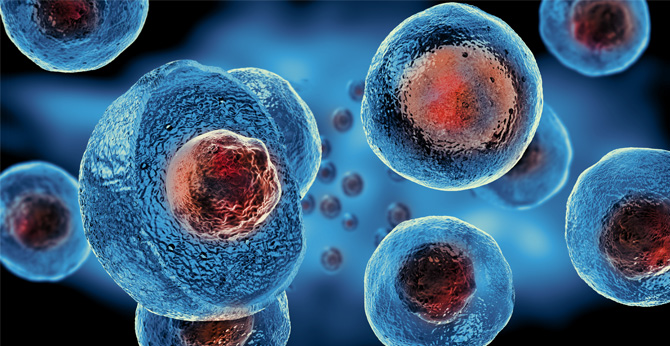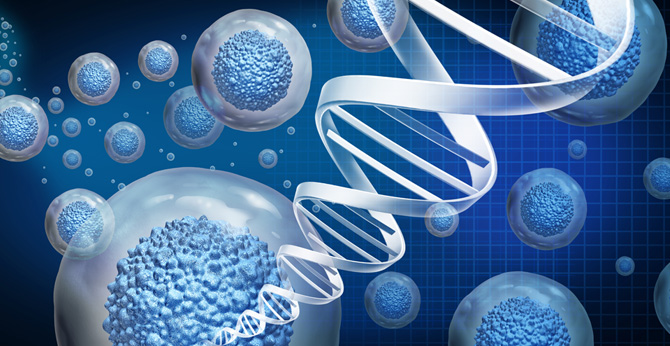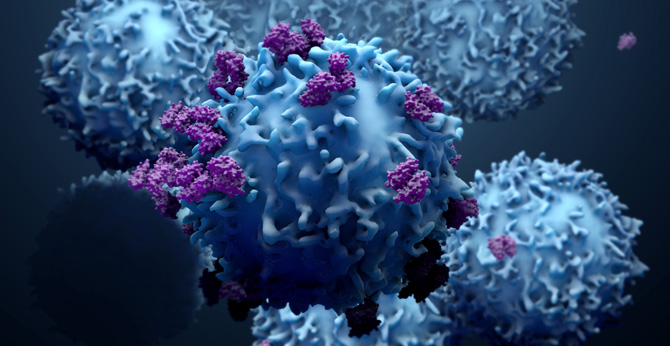All products and services are For Research Use Only and CANNOT be used in the treatment or diagnosis of disease.
Human epidermal growth factor receptor 2 (HER2), also known as ErbB-2, cluster of differentiation 340 (CD340), proto-oncogene Neu, is encoded by the ERBB2 gene. As a member of the human epidermal growth factor receptor (HER/EGFR/ERBB) family, HER2 has become an important biomarker and target of therapy for breast cancer. Not only the overexpression of HER2 occurs in breast cancer, but also it is strongly associated with the ovarian cancer, stomach cancer, lung adenocarcinoma, uterine cancer, salivary gland cancer, acute lymphoblastic leukemia (ALL), bladder cancer, childhood medulloblastoma, colorectal cancer, oral squamous cell carcinoma, germ-cell testicular tumor, cholangiocarcinoma, osteosarcoma, pancreatic adenocarcinoma and prostate cancer.
 Associated Disease
Associated Disease
 Loading...
Loading...
| CAT | Product Name | Target Species | Antibody Clone | Antibody Host | Receptor Construction | Vector Type | Targeting Cell Type | CAR Vector Type | Inquiry & Datasheet |
| CAR-ZP8468 | A uniCAR [Anti-FITC CAR], with a Fab-based CAR Adaptor [Anti-Her2 (Trastuzumab(4D5))], a Switchable CAR System | Breast cancer | Lentiviral vector | ||||||
| CAR-ZP8477 | A uniCAR [Anti-FITC CAR], with a mAb-based CAR Adaptor [Anti-Her2 (Trastuzumab)], a Switchable CAR System | Breast cancer | Lentiviral vector | ||||||
| CAR-ZP8487 | A uniCAR [Anti-CD16 CAR], with a mAb-based CAR Adaptor [Anti-Her2 (Trastuzumab)], a Switchable CAR System | Breast cancer | Lentiviral vector | ||||||
| CAR-ZP8502 | A uniCAR [Anti-leucine zipper CAR], with a mAb-based CAR Adaptor [Anti-Her2], a Switchable CAR System | Breast cancer | Lentiviral vector | ||||||
| CAR-MV-01LX020 | Anti-HER2 (NY29) h(CD28-CD3ζ) CAR, pMMLV | Human | NY29 | Mouse | scFv-CD28-CD3ζ | Recombinant Moloney murine leukemia virus (MMLV) retroviral vector | T cell | ||
| CAR-MV-01LX021 | Anti-HER2 (FRP5) h(CD28-CD3ζ) CAR, pMMLV | Human | FRP5 | Mouse | scFv-CD28-CD3ζ | Recombinant Moloney murine leukemia virus (MMLV) retroviral vector | T cell | ||
| CAR-MV-01LX022 | Anti-HER2 (4D5) h(CD28-CD3ζ) CAR, pMMLV | Human | 4D5 | Mouse | scFv-CD28-CD3ζ | Recombinant Moloney murine leukemia virus (MMLV) retroviral vector | T cell | ||
| CAR-MV-01LX023 | Anti-HER2 (ICR12) h(CD28-CD3ζ) CAR, pMMLV | Human | ICR12 | Mouse | scFv-CD28-CD3ζ | Recombinant Moloney murine leukemia virus (MMLV) retroviral vector | T cell | ||
| CAR-MV-01LX265 | Anti-HER2 (NY29) h(41BB-CD3ζ) CAR, pMMLV | Human | NY29 | Mouse | scFv-41BB-CD3ζ | Recombinant Moloney murine leukemia virus (MMLV) retroviral vector | T cell | ||
| CAR-MV-01LX266 | Anti-HER2 (FRP5) h(41BB-CD3ζ) CAR, pMMLV | Human | FRP5 | Mouse | scFv-41BB-CD3ζ | Recombinant Moloney murine leukemia virus (MMLV) retroviral vector | T cell | ||
| CAR-MV-01LX267 | Anti-HER2 (4D5) h(41BB-CD3ζ) CAR, pMMLV | Human | 4D5 | Mouse | scFv-41BB-CD3ζ | Recombinant Moloney murine leukemia virus (MMLV) retroviral vector | T cell | ||
| CAR-MV-01LX268 | Anti-HER2 (ICR12) h(41BB-CD3ζ) CAR, pMMLV | Human | ICR12 | Mouse | scFv-41BB-CD3ζ | Recombinant Moloney murine leukemia virus (MMLV) retroviral vector | T cell | ||
| CAR-SB-02LX019 | Anti-HER2 (NY29) h(CD28-41BB-CD3ζ) CAR, pSBCAR1 | Human | NY29 | Mouse | scFv-CD28-41BB-CD3ζ | Sleeping Beauty (SB) transposon | T cell | ||
| CAR-SB-02LX020 | Anti-HER2 (FRP5) h(CD28-41BB-CD3ζ) CAR, pSBCAR1 | Human | FRP5 | Mouse | scFv-CD28-41BB-CD3ζ | Sleeping Beauty (SB) transposon | T cell | ||
| CAR-SB-02LX021 | Anti-HER2 (4D5) h(CD28-41BB-CD3ζ) CAR, pSBCAR1 | Human | 4D5 | Mouse | scFv-CD28-41BB-CD3ζ | Sleeping Beauty (SB) transposon | T cell | ||
| CAR-SB-02LX022 | Anti-HER2 (ICR12) h(CD28-41BB-CD3ζ) CAR, pSBCAR1 | Human | ICR12 | Mouse | scFv-CD28-41BB-CD3ζ | Sleeping Beauty (SB) transposon | T cell | ||
| CAR-SB-02LX261 | Anti-HER2 (NY29) h(CD28-OX40-CD3ζ) CAR, pSBCAR1 | Human | NY29 | Mouse | scFv-CD28-OX40-CD3ζ | Sleeping Beauty (SB) transposon | T cell | ||
| CAR-SB-02LX262 | Anti-HER2 (FRP5) h(CD28-OX40-CD3ζ) CAR, pSBCAR1 | Human | FRP5 | Mouse | scFv-CD28-OX40-CD3ζ | Sleeping Beauty (SB) transposon | T cell | ||
| CAR-SB-02LX263 | Anti-HER2 (4D5) h(CD28-OX40-CD3ζ) CAR, pSBCAR1 | Human | 4D5 | Mouse | scFv-CD28-OX40-CD3ζ | Sleeping Beauty (SB) transposon | T cell | ||
| XS-0722-YT117 | Anti-HER2 (T0Y147) h(CD28-CD3ζ) CAR, pCDCAR1 | Human | T0Y147 | Human | scFv-CD28-CD3ζ | Lentiviral vector | T cell | ||
| XS-0722-YT118 | Anti-HER2 (T0Y148) h(CD28-CD3ζ) CAR, pCDCAR1 | Human | T0Y148 | Human | scFv-CD28-CD3ζ | Lentiviral vector | T cell | ||
| XS-0722-YT133 | Anti-HER2 (T0Y153) h(41BB-CD3ζ) CAR, pCDCAR1 | Human | T0Y153 | Human | scFv-4-1BB-CD3ζ | Lentiviral vector | T cell | ||
| XS-0722-YT134 | Anti-HER2 (T0Y154) h(41BB-CD3ζ) CAR, pCDCAR1 | Human | T0Y154 | Human | scFv-4-1BB-CD3ζ | Lentiviral vector | T cell | ||
| XS-0722-YT135 | Anti-HER2 (T0Y155) h(41BB-CD3ζ) CAR, pCDCAR1 | Human | T0Y155 | Human | scFv-4-1BB-CD3ζ | Lentiviral vector | T cell |
 NEWSLETTER
NEWSLETTER
The latest newsletter to introduce the latest breaking information, our site updates, field and other scientific news, important events, and insights from industry leaders
LEARN MORE NEWSLETTER NEW SOLUTION
NEW SOLUTION
CellRapeutics™ In Vivo Cell Engineering: One-stop in vivo T/B/NK cell and macrophage engineering services covering vectors construction to function verification.
LEARN MORE SOLUTION NOVEL TECHNOLOGY
NOVEL TECHNOLOGY
Silence™ CAR-T Cell: A novel platform to enhance CAR-T cell immunotherapy by combining RNAi technology to suppress genes that may impede CAR functionality.
LEARN MORE NOVEL TECHNOLOGY NEW SOLUTION
NEW SOLUTION
Canine CAR-T Therapy Development: From early target discovery, CAR design and construction, cell culture, and transfection, to in vitro and in vivo function validation.
LEARN MORE SOLUTION